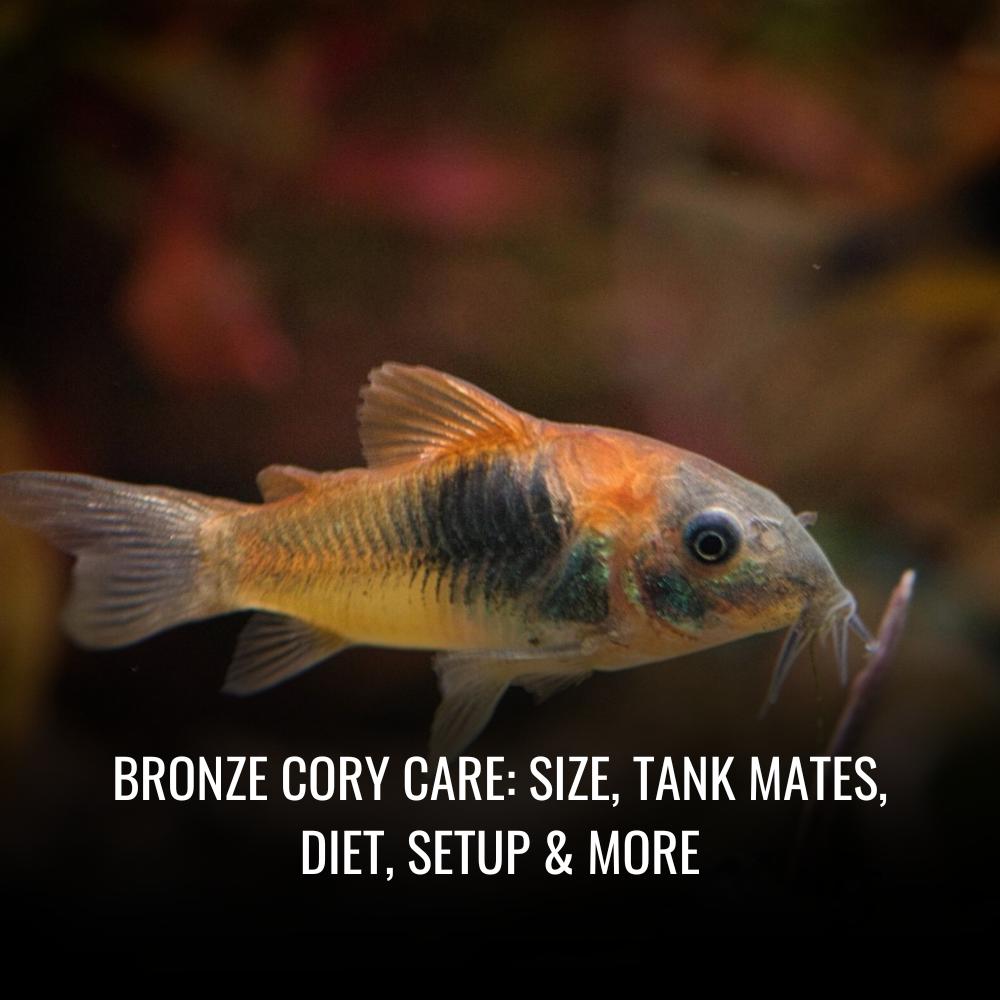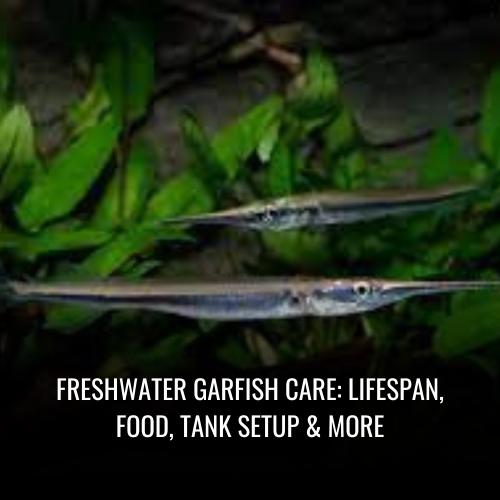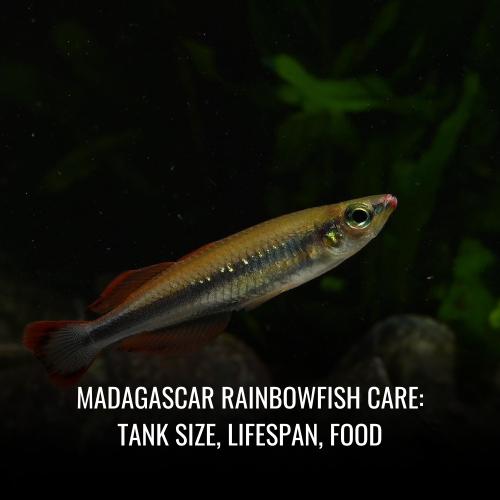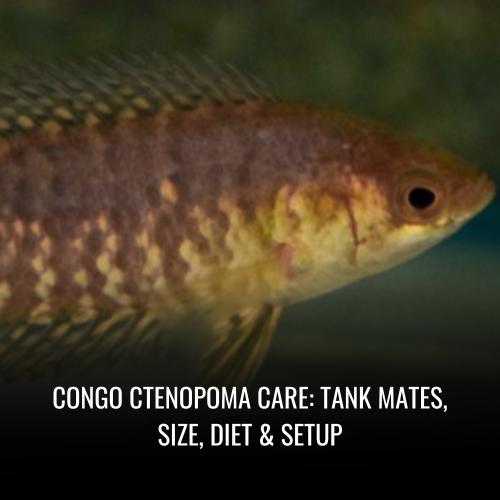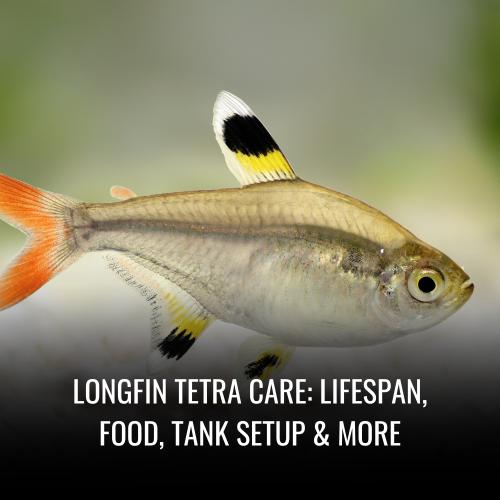Sailfin glass perchlet Care: Size, Tank Mates, Diet, Setup
This post contains affiliate links. As an Amazon Associate, we earn from qualifying purchases.
The Sailfin Glass Perchlet, known for its delicate appearance and peaceful demeanor, is a charming addition to many aquariums. Originating from Oceania, these fish are well-suited to freshwater and coastal streams settings. They typically grow to 7-8 cm (2.76-3.15 inches) in captivity, making them a manageable size for most tanks.
In terms of care, the Sailfin Glass Perchlet thrives in water with a pH range of 6.5-7.1 and a hardness of 4-13°N (71.43-232.14ppm). They prefer warmer water, ranging from 22-27 °C (71.6-80.6°F), reflecting their tropical origins. This species is top-dwelling and known for its breeding behavior, where they spawn in the upper levels of the aquarium.
| Attribute | Details |
|---|---|
| Scientific name | Chanda ranga |
| Common name | Sailfin Glass Perchlet |
| Family | Ambassidae |
| Usual size in fish tanks | 4 inches (10 centimeters) |
| Recommended pH range | 6.0 – 7.5 |
| Recommended water hardness | 5 – 12 dGH |
| Recommended temperature | 75-82°F (24-28°C) |
| Reproduction | Egg layers, usually in vegetation |
| Origin | India, Bangladesh, Myanmar |
| Temperament to its own species | Can be territorial, may display aggression towards conspecifics |
| Temperament toward other fish species | Peaceful, may become prey to larger aggressive fish |
| Usual place in the tank | Mid to bottom level |
| Lifespan | 3-5 years |
| Tank size requirement | Minimum 20 gallons |
| Filtration system | Can thrive in a well-filtered tank |
| Sexual dimorphism | Males are larger, females may have a rounder belly when gravid |
| Substrate cleaning | Regular cleaning needed, as they are sensitive to water quality |
Scientific Name
The Sailfin Glass Perchlet is scientifically recognized as Ambassis agrammus. This species is part of the Ambassis genus, which comprises around 20 distinct species, each with unique attributes. Notable members of this genus include Ambassis agassizii, Ambassis fontoynonti, Ambassis miops, and Ambassis urotaenia. Ambassis agrammus is sometimes referred to by alternative scientific names such as Ambassis interrupta reticulatus and Ambassis nalua, highlighting the species’ rich taxonomic history and the evolving understanding of its classification.
The standardized scientific nomenclature ensures accurate identification across the international community, aiding in research and conservation efforts. Here’s a quick reference to the Sailfin Glass Perchlet’s classification:
| Genus | Species | Alternative Scientific Names | Notable Related Species |
|---|---|---|---|
| Ambassis | agrammus | Ambassis interrupta reticulatus, Ambassis nalua | Ambassis agassizii, Ambassis fontoynonti, Ambassis miops, Ambassis urotaenia |
By understanding its scientific name, researchers and enthusiasts can better appreciate the Sailfin Glass Perchlet’s evolutionary relationships and ecological significance within its natural aquatic environments.
Average Size
The Sailfin Glass Perchlet is quite the petite resident of the aquatic world. Adults usually span a modest 2 to 3 inches in length. When they first embark on their tank journey, the juvenile perchlets measure merely half an inch. Interestingly, males display a touch of grandeur, as they often outsize their female counterparts.
| Lifecycle Stage | Size |
|---|---|
| Juvenile | 0.5 inches |
| Adult | 2-3 inches |
Several factors interplay to shape their growth trajectory. A tailor-made diet, pristine water quality, and well-regulated tank habitat weave together to craft an environment where these delicate fish can thrive and perhaps even exceed the average benchmarks.
Ensuring a spacious and harmonious abode is fundamental. The right tank size and conditions not only foster their growth but also safeguard their vitality. It’s the aquarist’s ballet: every move counts in cultivating a healthy, full-sized Sailfin Glass Perchlet.
- Essential Factors for Growth:
- Balanced diet
- High-quality water
- Appropriate tank conditions
Lifespan
Cherishing a Sailfin Glass Perchlet in captivity means committing to an aquatic companionship that spans, on average, 3 to 5 lively years. With the benefit of exceptional care, some enthusiasts recount tales of these delicate creatures gracing their tanks for up to 8 years.
| Average Lifespan | Potential Lifespan with Optimal Care |
|---|---|
| 3-5 years | Up to 8 years |
The blueprint to a long life for a Sailfin Glass Perchlet lies within the trifecta of high-grade water, a nutritious diet, and congenial tank mates. These factors are paramount in steering clear of stressors that can otherwise snip threads from the delicate tapestry of their life.
Diligent aquarium stewardship, featuring consistent water checks and changes, is a pivotal routine that bolsters their vitality. A life cut short is often the story for those kept in less than ideal conditions such as crowded spaces, poor nutrition, and substandard water.
- Vital Longevity Tips:
- Monitor and maintain water quality
- Provide a balanced diet
- Select suitable tank mates
- Regularly clean and manage the tank environment
Every aquarist’s goal is to foster a setting that mirrors their natural habitat, ensuring each Sailfin Glass Perchlet flourishes for years to come.
Natural Habitat
Sailfin Glass Perchlets are versatile inhabitants predominantly found amidst the brackish waters of northern Australia’s coastal streams and mangroves. They also dwell within freshwater streams, embracing environments laced with dense vegetation. The tranquil estuarine habitats they favor often exhibit a symphony of salinity levels, reflecting their adaptive nature.
These fish prefer the calm embrace of slow-moving or still waters, where they usually seek refuge among submerged roots and fallen branches. This preference for protected spaces shields them from the harsh flows and predators of their ecosystem.
The Sailfin Glass Perchlet has carved out its niche within the balmy realms of a tropical climate. Water temperatures in their natural abode typically span from 23°C to 28°C, ensuring a warm and hospitable environment for these delicate creatures.
| Optimal Habitat Conditions for Sailfin Glass Perchlet |
|---|
| Habitat Type |
| Location |
| Water Temperature Range |
| Preferred Water Movement |
| Shelter |
Thriving in such niches has allowed the Sailfin Glass Perchlet to flourish, necessitating aquarists to simulate these conditions for sustained health and wellness within the confines of a fish tank.
Appearance
The Sailfin glass perchlet, formally identified as Ambassis agrammus, stands out with its unique visual appeal. This fish has a slender body that glistens with an olive-green hue, contributing to its natural camouflage amongst aquatic foliage. It’s the transparent nature of its fins that has garnered attention, giving the fish a fragile, almost ethereal presence in the water.
Characterized by remarkably dark scale edges, this species features a vertical pattern of scales and can have anywhere from 0 to 11 tubed scales lining its body. Notably, these scales are arranged in transverse rows across the body, enhancing the perchlet’s streamlined look.
Their body depth is noted for its relative prominence, offering a glimpse into their agile maneuverability under the water’s surface. As inhabitants of the larger grouping known as common glassfishes or Asiatic glassfishes, Sailfin glass perchlets are a visual delight with their crystalline finnage and sleek contours, making them a popular choice for aquarists who appreciate a touch of elegance in their home aquariums.
Behavior & Temperament
The Sailfin glass perchlet, a species known for its peaceful nature, is a shining example of harmony in the aquatic realm. Exhibiting a tranquil temperament, these fish are renowned for their ability to peacefully coexist with other non-aggressive species. Aquarists often praise them for their community-friendly behavior, which makes them a favorite in diverse tank settings.
However, their serene personality doesn’t mean Sailfin glass perchlets lack complexity. Avid observers will note that they display a variety of behaviors, from shoaling to seeking sanctuary in the aquarium’s hiding spots. Let’s delve deeper into the distinct behavioral traits that define Sailfin glass perchlets.
Are Sailfin glass perchlet Fin Nippers?
Sailfin glass perchlet are far from the mischievous fin nippers one might be wary of in community tanks. Instead, their placid nature ensures a gentle coexistence with tank mates. This characteristic makes them ideal companions even for species with delicate finnage, as they exhibit no tendency to nip or harass their aquatic neighbors.
Are Sailfin glass perchlet Aggressive To Each Other & Other Fish?
Sailfin glass perchlet set the standard for amicable interactions both among their own kind and with other fish. Rarely will one witness aggressive posturing or territory battles within the graceful sways of these fish. Even during breeding seasons when competitors often lock horns, Sailfin glass perchlet maintain a respectful distance, relying on the aquarium’s ample hiding spots to defuse potential conflicts.
Are Sailfin glass perchlet Friendly To Each Other & Other Fish?
Remarkably sociable, Sailfin glass perchlet display an affable rapport with their tank mates. Their acceptance and friendliness extend not just to their species but also to a community of compatible fish, fostering a convivial environment below the surface. Aquarium owners can rest assured that interspecies drama will be at a minimum with these cordial creatures in residence.
Are Sailfin glass perchlet Schooling Fish?
In the wild, Sailfin glass perchlet are known to exhibit schooling behavior, moving in harmonious assembly through fresh and brackish waters. In the aquarium, these fish translate their natural inclination into loose schools, adding a dynamic layer to the tank’s ecosystem. While they may not form the tight formations characterized by some schooling species, their group behavior contributes positively to both their well-being and the aquatic display.
Can You Have Just One Sailfin glass perchlet In The Tank?
For those with limited space, it’s possible to house a solitary Sailfin glass perchlet, although with compromise. In isolation, these fish may forgo the vibrance of their schooling nature, necessitating careful observation to ensure their singular lives are stress-free. While they adapt to solitude, their preference for companionship should always be taken into account when planning the tank’s inhabitants.
Do Sailfin glass perchlet Need To Be In Groups?
Although resilient in various conditions, Sailfin glass perchlets flourish when accompanied by their kin. A group setting encourages their natural behavior, minimizes stress, and enhances their overall health. Aquarists seeking to replicate the most authentic and beneficial environment should consider fostering a group dynamic where Sailfin glass perchlets can interact and thrive together.
| Social Structure | Behavior |
|---|---|
| Solitary | Possible, but not ideal |
| Pair | Harmonious |
| Small Group | Natural behavior, less stress |
| Larger School | Dynamic interactions, thriving |
In summary, Sailfin glass perchlet epitomize the ideal qualities sought after in communal fish. Their non-aggressive and friendly approach to life under the water’s surface ensures that they are a perfect match for aquarists hoping to cultivate a peaceful aquatic community.
Food & Diet
Sailfin glass perchlets are omnivorous and display a versatile palette, which helps aquarists diversify their diets to ensure optimal health and well-being. They can be initially picky eaters, but with patience, they can adapt to a varied diet that includes both live and commercial options.
Do Sailfin glass perchlet Eat Algae?
While Sailfin glass perchlets consume small amounts of algae in the wild as part of their natural diet, algae should not be considered their primary source of nutrition. In a tank setting, these fish may occasionally nibble on algae; however, aquarists should ensure the inclusion of vegetable-based flake or pellet foods to meet their nutritional requirements. To maintain the fish’s health and coloration, a balanced diet supplemented with protein-rich foods such as live or frozen brine shrimp, daphnia, and bloodworms is essential.
Do Sailfin glass perchlet Eat Shrimp?
Yes, Sailfin glass perchlets will eagerly consume small shrimp, both live and frozen. This dietary habit is a nod to their natural predilection for crustaceans in the wild. Shrimp offer a significant source of protein that contributes to the fish’s vitality. Aquarists can supplement the Sailfin glass perchlet’s diet with brine shrimp or bloodworms to provide necessary nutrition, reinforcing their natural feeding behaviors within the confines of an aquarium.
Do Sailfin glass perchlet Eat Bloodworms?
Bloodworms form an integral part of Sailfin glass perchlets’ diet. These nutritious offerings are rich in protein and can be delivered frozen or live. Regularly feeding bloodworms to Sailfin glass perchlets stimulates their foraging behaviors and aligns with their natural dietary habits. Bloodworms not only offer diverse feeding experiences but also provide essential nutrients that ensure growth, suggest vitality, and foster natural actions.
Do Sailfin glass perchlet Eat Mosquito Larvae?
Sailfin glass perchlets are natural consumers of mosquito larvae, benefitting ecosystems by helping control mosquito populations. The inclusion of mosquito larvae in their dietary regimen can replicate the natural conditions of their wild habitat, imbuing the fish with necessary proteins and promoting their health. Offering mosquito larvae occasionally or as a supplement can support the Sailfin glass perchlet’s nutrition and enhance their instinctual feeding practices.
Do Sailfin glass perchlet Eat Planaria?
Planaria, although not a core element of the Sailfin glass perchlet’s diet, may occasionally be eaten if present in the aquarium environment. These flatworm-like organisms, often found on tank substrates or decorations, are opportunistically fed upon by Sailfin glass perchlets, especially when other food sources are scarce. A balanced diet is crucial, which should include high-quality commercial foods and live or frozen prey to maintain the fish’s health.
Do Sailfin glass perchlet Eat Plants?
Typically, Sailfin glass perchlets are not avid plant eaters, but they may nibble on soft or tender plants if their regular dietary needs are not adequately met. They prefer a diet rich in proteins and will consume pellets, flakes, and live foods over plant matter. To prevent Sailfin glass perchlets from damaging live plants in the aquarium, aquarists should provide a well-rounded diet that includes a mix of commercial and live foods, minimizing the inclination to feed on plants.
In summary, aquarists must pay attention to the varied dietary requirements of Sailfin glass perchlets and provide a comprehensive meal plan that incorporates live, frozen, and commercial food options, ensuring these enchanting fish remain healthy and vivacious within their aquatic domains.
| Food Type | Sailfin glass perchlet’s Diet Preference |
|---|---|
| Algae | Occasional |
| Shrimp | Yes |
| Bloodworms | Yes |
| Mosquito larvae | Yes |
| Planaria | Occasionally |
| Plants | Rarely; only when other foods are scarce |
Sexing: Male vs Female
Determining the sex of Sailfin glass perchlets can be a challenging task, as the fish exhibit subtle sexual dimorphism. Hobbyists often rely on nuanced distinctions in body structure and fin morphology to differentiate between the sexes.
Key Indicators:
| Sex | Indicators |
|---|---|
| Male | Deeper body, enhanced fin extensions |
| Female | Rounder belly, less pronounced fins |
Generally, mature males will show a deeper body shape, which becomes more apparent with age. As they reach maturity, males also tend to develop slightly more pronounced physical traits, including potential fin extensions that can serve as a visual clue for sexing. On the other hand, mature females may have a rounder belly, especially when gravid, and present a more streamlined body profile in comparison to males.
Experienced aquarium enthusiasts might observe variations in body size and the development of fins to determine the sex, although it requires careful inspection. Nevertheless, these subtle differences emerge more clearly over time as Sailfin glass perchlets grow into maturity.
Given these nuances, aquarists should be patient and attentive when attempting to sex Sailfin glass perchlets.
Sailfin glass perchlet Tank Mates
Sailfin glass perchlets are known for their tranquil nature, making them excellent additions to a community aquarium. When selecting tank mates, it’s important to consider the compatibility and the different layers of the tank each species prefers.
Ideal Tank Mates for Sailfin Glass Perchlets:
- Small Peaceful Fish: Such as tetras, rasboras, and gouramis that are gentle and unlikely to cause stress.
- Mid and Bottom Dwellers: Corydoras and Kuhli loaches make great companions, as they occupy different strata of the tank environment.
- Freshwater Shrimp: Non-aggressive shrimp species, including Cherry and Amano shrimp, can coexist without issues.
- Peaceful Bottom-Dwellers: Dwarf cichlids are suitable due to Sailfin glass perchlet’s preference for the upper levels of the aquarium.
It’s crucial to avoid pairing Sailfin glass perchlets with aggressive or territorial species, as these gentle fish can become stressed in such a setting. By choosing compatible tank mates, you ensure a harmonious and stress-free environment for all of your aquatic pets.
| Aquarium Layer | Recommended Tank Mates |
|---|---|
| Upper Levels | Sailfin glass perchlet |
| Mid Levels | Tetras, Rasboras, Gouramis |
| Bottom Levels | Corydoras, Kuhli Loaches |
| Bottom Levels | Dwarf Cichlids |
With a thoughtful selection of tank mates, your Sailfin glass perchlets can thrive and add to the dynamic visual display of your aquarium.
Aquarium Setup
Creating the perfect environment for Sailfin glass perchlets involves a thoughtful aquarium setup that replicates their natural habitat. This translates into a tank with abundant plants and various hiding spots, where these fish can feel secure, much like they would in the freshwater and brackish coastal streams of their origin. A fine substrate is a must in the aquarium to satisfy their instinct to dig and bury themselves for comfort and play.
To ensure their wellbeing, the aquarium must maintain high water quality. Therefore, it’s essential to equip the tank with an effective aeration and filtration system and commit to performing regular water changes. These measures will help manage the water parameters within the ideal range for Sailfin glass perchlets, who are known for their sensitivity to changes in their aquatic environment.
Dim lighting should be used to create a subdued atmosphere that mirrors the shaded areas that Sailfin glass perchlets inhabit in the wild. This not only reduces their stress levels but also promotes their natural behavior, making your aquarium a peaceful yet engaging scene of underwater life.
Ideal Tank Size
| Aquarium Size | Group Size | Aquarium Type |
|---|---|---|
| 20 gallons | Small group (3-5 fish) | Basic Group Setup |
| 30-40 gallons | Larger group or community tank | Expanded/Community Setup |
| 36 inches+ length | Any | Ideal swimming space |
For Sailfin glass perchlets, an aquarium of at least 20 gallons is recommended for a small shoal of 3-5 fish, providing ample space for their active swimming and potential territorial behaviors. For aquarists aiming to create a larger community tank or accommodate more perchlets, a 30-40 gallon tank is preferred. The length of the tank is also vital; at least 36 inches or more is ideal to satisfy their preference for horizontal swimming and to enhance their quality of life by providing a spacious environment symmetrical to their natural habitat.
Ideal Water Parameters
Maintaining the right water conditions is crucial for the health of Sailfin glass perchlets:
| Parameter | Ideal Range |
|---|---|
| Temperature | 72-82°F (22-28°C) |
| pH | 7.0-8.0 |
| Water Hardness | 8-12 dGH |
| Ammonia/Nitrite | 0 ppm |
| Water Flow | Moderate |
Sailfin glass perchlets fare best in a tropical climate with water temperatures ranging from 72-82°F (22-28°C). A pH range between 7.0-8.0 and a water hardness of 8-12 dGH are optimal and will replicate the slightly alkaline to neutral water conditions of their natural habitats. Impeccable water quality is necessary, thus ammonia and nitrite levels should always be kept at zero. A moderate water flow in the tank will simulate the movement they are accustomed to in coastal and freshwater streams.
Filtration
Filtration is the linchpin in maintaining a pristine environment for Sailfin glass perchlets. A combination of mechanical, biological, and chemical filtration is indispensable for keeping the tank water clear of waste and other contaminants. The filter system should provide a gentle water movement, reflecting the calm waters of their native habitat, and ensuring the filtration doesn’t generate strong currents which could lead to undue stress for these sensitive fish. Regular maintenance, including water changes and filter servicing, is essential to sustain the health and comfort of the Sailfin glass perchlets.
Lighting
The Sailfin glass perchlet’s preference for subdued lighting necessitates the use of dimmable solutions or low-intensity lighting in the aquarium. This approach helps to foster natural behaviors and lower stress levels among these fish. Energy-efficient LED lights are an excellent choice, offering customizable lighting options to recreate the shadowy conditions they are used to. It’s important to steer clear of bright and direct lighting to prevent the growth of algae and to maintain the serenity of their surroundings. Maintaining a consistent routine, with around 8-10 hours of light daily, will help regulate their circadian rhythm and promote a balanced aquarium ecosystem.
Common Possible Diseases & Prevention
Common Possible Diseases & Prevention Sailfin glass perchlets are not exempt from common fish ailments, such as ich, fin rot, and velvet disease. Ensuring excellent water quality and a nutritious diet is key to disease prevention.
| Disease | Prevention Tips |
|---|---|
| Ich | Stable water conditions, regular water changes |
| Fin Rot | Avoid overcrowding, good tank hygiene |
| Velvet | Quarantine new additions, appropriate water parameters |
Maintain proper water parameters and perform regular changes to create a stress-free habitat that bolsters their immunity against such illnesses. Quarantining new tank mates before their introduction can prevent external parasites, including flukes and diseases like velvet, from affecting your fish.
Be vigilant for symptoms of illness in your Sailfin glass perchlet, such as clamped fins, a decrease in appetite, or unusual swimming patterns. Prompt action is essential to halt disease proliferation. Remember, the health of your aquatic community starts with preventing overcrowding and ensuring any new fish spend time in quarantine to keep your Sailfin glass perchlets thriving.
Breeding Sailfin glass perchlet In Aquarium
The breeding of Sailfin glass perchlets in captivity entails meticulous planning and care. Ideally, breeders should set up a dedicated breeding tank, where adult fish are conditioned with a diet of live or frozen foods to promote spawning readiness.
| Breeding Step | Details |
|---|---|
| Separate Breeding Tank | Conditions adult fish for spawning. |
| Diet for Conditioning | Includes live or frozen foods. |
| Egg Scatterers | Adhesive eggs laid among plants or spawning mop. |
| Post-Spawning | Adults removed to prevent egg predation. |
| Egg Hatching Time | Roughly 24-36 hours. |
| Fry Feeding | Begin with infusoria, progress to newly hatched brine shrimp. |
| Water Quality Management | Gentle filtration, stable parameters, regular changes. |
| Dedicated Setup Considerations | Abundant plants, gentle water flow, suitable tank mates. |
Sailfin glass perchlets gently scatter adhesive eggs among aquatic plants or a spawning mop. It’s crucial to remove adults post-spawning to prevent egg consumption. Eggs hatch within a day or so, with infusoria being the initial ideal food for fry, transitioning to brine shrimp as they grow.
Ensuring optimal water quality is fundamental during the breeding process. Implement gentle filtration, maintain stable water parameters, and perform regular water changes. A tank with plentiful plants and a soft current, along with congenial tank mates, can significantly improve fry survival chances. Keep a watchful eye on developing fry in their specially prepared environment to maximize their potential for a healthy start to life.
Are Sailfin glass perchlet Easy To Keep?
Sailfin glass perchlet, scientifically known as Ambassis agrammus, are touted as a viable choice for novice and experienced aquarists alike thanks to their peaceful nature and relatively straightforward care requirements. These diminutive, attractive fish are noteworthy for their adaptability to diverse water conditions, thereby simplifying the task of sustaining optimal tank environments.
Their resilience is evident in their ability to withstand minor variances in water quality, positioning them as an ideal option for beginners in the aquarist community. While they thrive in a tank setting, the Sailfin glass perchlet’s small size and minimalistic needs underline their suitability for enthusiasts who desire to keep their aquarium maintenance manageable without compromising on aesthetic appeal.
To recapitulate, the Sailfin glass perchlet stands out due to:
- A peaceful temperament
- Minimal care requirements
- Adaptability to a range of water parameters
- Tolerance to minor water quality fluctuations
- Small size suited for various tank sizes
- Attractiveness and ease for beginner aquarists
Are Sailfin glass perchlet Sensitive To Water Changes?
Although the Sailfin glass perchlet is known for its hardy nature, it’s essential to recognize their sensitivity to abrupt changes in water conditions. Perturbations in temperature, pH, and hardness can impose undue stress on these fish, eliciting health problems if neglected. It is vital to maintain a stable aquarium environment, specifically with temperatures ranging between 22-27°C (71.6-80.6°F), to assure their comfort and longevity.
Equally significant is to uphold a consistent pH between 6.5 and 7.1; unanticipated fluctuations can unsettle their equilibrium and potentially undermine their immunity. Also, regulating water hardness to fall within the spectrum of 4-13°N (71.43-232.14ppm) is imperative. When introducing Sailfin glass perchlets to a new tank or altering existing conditions, gradual acclimation is the watchword to prevent distress and protect their welfare.
Are Sailfin glass perchlet Sensitive To Ammonia?
These fish exhibit an extreme sensitivity to ammonia. Elevated ammonia levels are a definite no-go, capable of inducing severe stress and respiratory complications, ultimately posing a fatal threat. Keeping ammonia concentrations at zero ppm is of the utmost importance for the health of Sailfin glass perchlet.
Minute quantities of this toxic compound can impair gill functionality, which in turn heightens vulnerability to afflictions. Symptoms of ammonia toxicity include lethargy, diminished appetite, and augmented mucus secretion. To fend off ammonia’s harmful impact, it’s critical to utilize efficient filtration systems and adhere to a strict routine of regular water replacements.
Are Sailfin glass perchlet Sensitive To Copper?
Indeed, Copper is one of the substances to which Sailfin glass perchlets exhibit a particularly low tolerance. Toxic to their respiratory and nervous systems, copper exposure, even at minimal levels, warrants concern. Consequently, avoiding the use of copper-based treatments, as well as decorations and apparatus likely to leach copper, is a key precautionary measure in safeguarding these fish.
Copper toxicity can lead to stress, compromised immunity, and increased disease susceptibility in Sailfin glass perchlets. Regular copper level assessments are therefore an essential aspect of maintaining a secure habitat for these delicate creatures.


